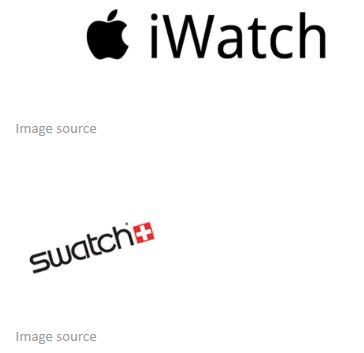Is the trade mark iWatch for watches confusingly similar to the trade mark Swatch for watches? That was the issue that the South African Supreme Court of Appeal had to decide in a recent case. The judgment was delivered by Judge Unterhalter.
The facts
Apple applied to register the trade mark iWatch in class 14 for watches. Swatch AG opposed this application based on a registration for the trade mark Swatch in the same class, also for watches.

The judgment
Judge Unterhalter's judgment is nice and short. He said that, although various grounds of opposition had been raised, the issue at the end of the day was a rather simple one: "Although these provisions have certain distinctive requirements, absent a finding that, upon proper comparison, the two marks are deceptively or confusingly similar, Swatch's grounds of opposition cannot prevail. It is to this central issue that I turn."
The test for confusing similarity
In South Africa, every discussion regarding confusingly similar marks starts with a reference to the old South African case of Van Riebeek Paints. That's the one where we're told that these matters require the court to consider a whole host of things, such as the visual, aural and conceptual similarities between the marks, the overall impression of the marks, the dominant features of the marks, the average consumer and the notion of imperfect recollection. Judge Unterhalter did not rock the boat, although in fairness he did also discuss other, more recent decisions.
Applying the test
The judge concluded that the marks iWatch and Swatch are not confusingly similar. The fact that the common feature "watch" is non-distinctive is significant – the registration for Swatch is subject to an admission that "registration shall not debar other persons from the bona fide descriptive use in the ordinary course of trade of the word Watch." As the judge said, "the use of the same descriptive word, of a commonplace item, serves to place greater significance on the prefix of each of the marks."
Dealing with the various forms of similarity the judge held that the two marks aren't visually similar – the first letters I and S "give rise to clear visual differentiation." Nor are they aurally similar, because "IWATCH sounds like 'eyewatch' or 'ayewatch'", and that's nothing like Swatch. Finally, they aren't conceptually similar: "There is good reason to avoid attaching exclusive rights to common descriptors."
Dealing with the likely consumer the judge said that for each brand the consumer will be a discerning one. And discerning consumers are no fools: "Consumers of this kind are less likely to be deceived or confused by the limited similarities between the marks."
So, this is a comprehensive victory for Apple. We'll end off by looking at a fairly obscure issue that did come up in the matter but didn't play a role in the outcome. Only real trade mark law enthusiasts should read on.
The family of marks argument
An interesting feature of the case was the "family of marks" argument raised by Apple. This went as follows: because we have launched many i-prefixed products over the years – such as iPhone, iPod and iTunes, people automatically assume that any such mark belongs to Apple, so no consumer would confuse iWatch with Swatch.
As the judge had already found that there would be no confusion he did not need to decide this point. This is what he said:
"There is some controversy attaching to this contention. A family of marks may assist the opponent in resisting the registration of a later mark that might appear to be a member of the opponent's family of marks. It is less clear that the family resemblance of an applicant's later mark, that is sought to be registered, may be used to dispel the likelihood of confusion with the opponent's earlier registered mark. There is no need to resolve this controversy in this case."'
Originally Published by ENSafrica, March 2021
The content of this article is intended to provide a general guide to the subject matter. Specialist advice should be sought about your specific circumstances.

